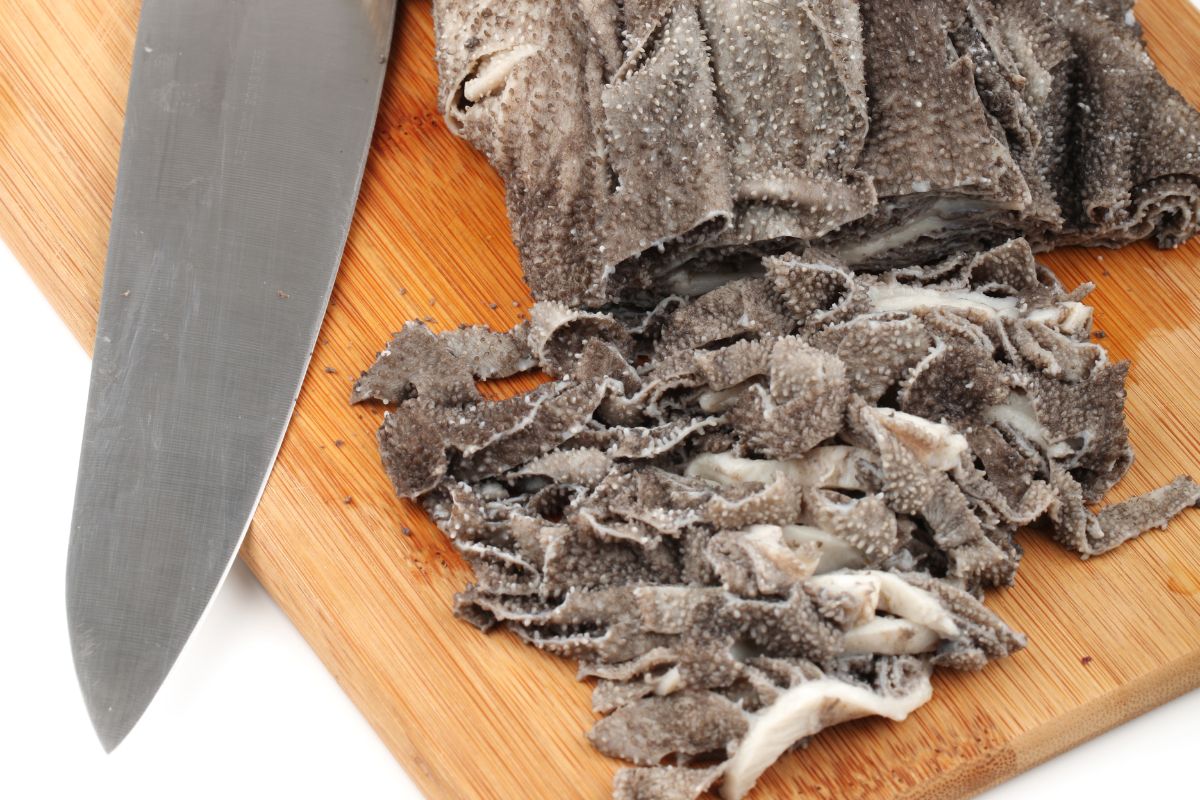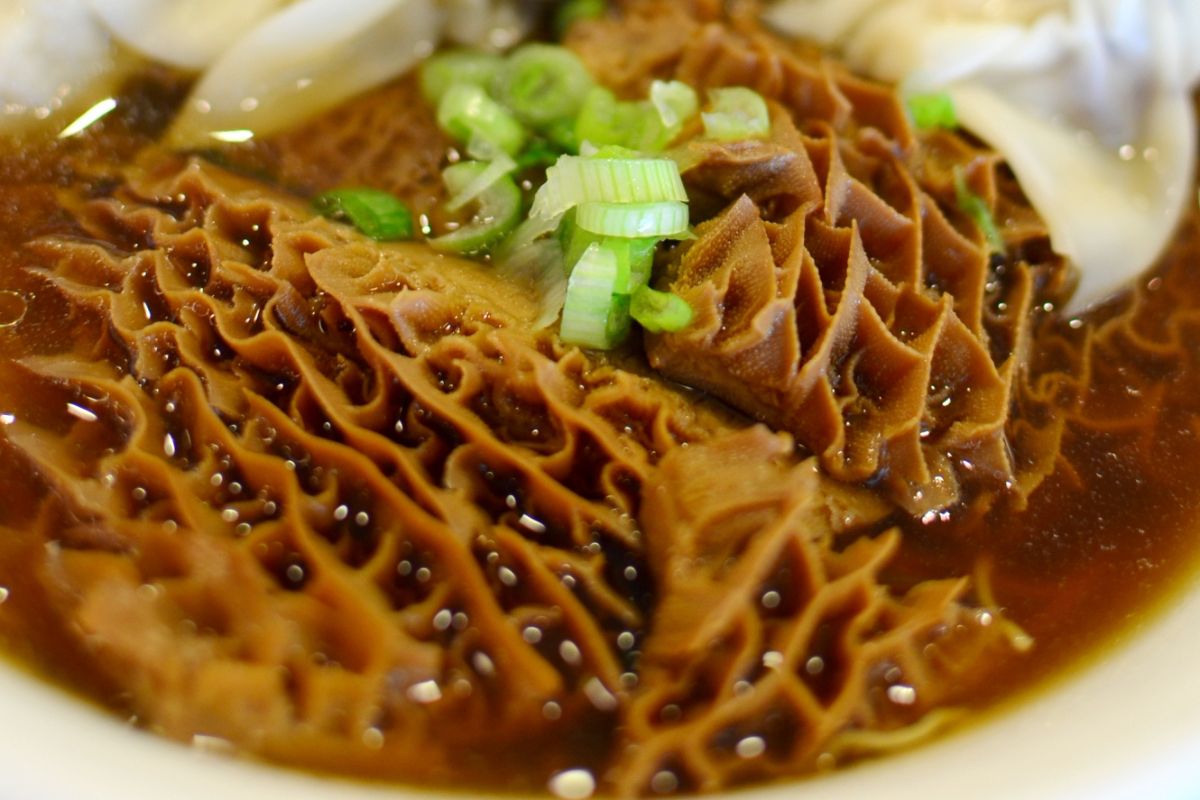When it comes to the food we eat, there are numerous products that are considered strange, unpleasant, or are otherwise divisive – even when they are perfectly tasty in their own right.

One example is tripe – a popular product in many countries, and something that remains fairly underrated within the great scheme of things.
But what exactly is tripe?
Where Does Tripe Come From?
As strange as it might sound, tripe is actually the stomach lining membrane of cows – something that is actually commonly thrown away in most western butcher shops, but something that remains popular in Europe and other parts of the world, where it is commonly fried and served as a delicacy.
As such, tripe remains a divisive food product, and one that people either seem to love or hate – depending on their stance on food, and the way they were raised.
What Does Tripe Taste Like?
Tripe that has been well cooked tends to have the same consistency as cooked squid – somewhat rubbery and springy.
However, the taste is considered to be much more gamey – tasting something similar to liver and other edible organs.
This combination of taste and texture are also things that make the food somewhat divisive amongst consumers – as both of these things have an equally love/hate reputation.
Why Is Tripe So Divisive?
There are few foods that are as divisive amongst people as tripe, and there are several good reasons for this.
Aesthetics
Firstly, the very texture and appearance of tripe can be really off putting for some people – particularly if they are fussy eaters, or they have sensitive stomachs.
This is because the tripe has the appearance of octopus tentacles when it has been sliced – with various ridges and holes on either side.
It is safe to say that tripe is not the most attractive animal part we could eat, which is why it is often unappealing for some people.
Taste
As mentioned above, the taste of tripe can be quite gamey, which can be off-putting for those that do not like strong tasting meat.
In the same way that liver and other organs are not to everyone’s taste, tripe can often come across as too rich tasting, too strong, or just downright unappealing to some.
Texture
Another reason is the texture, which has been described as being squid-like – that is, rubbery, stringy, stretchy, and difficult to chew through.
For those with sensitive stomachs with regards to food, this can be a tricky bite to get down indeed.
Origins
The origins of the dish can also be off-putting for many.
Perhaps understandably, when people find out that tripe comes from the stomachs of cows, the whole idea of eating it becomes somewhat more unappealing than if it were, say, a slice of regular meat.
Is Tripe Healthy?
Despite its reputation, tripe is actually incredibly healthy, and there are numerous benefits to consuming it as part of a healthy, balanced diet.
What Are The Benefits Of Eating Tripe?

As mentioned previously, there are numerous benefits when it comes to eating tripe – many of which are responsible for the continued presence of the dish.
Rich In Nutrients
Tripe is actually very rich in nutrients, and there are various minerals within that make tripe a really healthy part of the diet.
Tripe includes:
- Vitamin B12
- Selenium
- Zinc
- Calcium
- Iron
All of these things have numerous benefits around the body, ensuring regular function, and aiding things like:
- Muscle growth
- Weight management
- Red blood cell formation
- The avoidance of anemia
- Maintenance of strong bones
- Lower risk of age-related cognitive decline
- Expedited wound healing
- Immune system reinforcement
Rich In Protein
As with many forms of meat, tripe is also rich in high quality forms of protein – something that can be good for bolstering muscle growth, providing the body with the fuel it needs to function, and helping you stay fuller for longer.
It is also beneficial for cell-to-cell communication, fluid balance within the body, improving the function of the immune system, and repairing and maintaining the bodily tissue.
Affordable And Sustainable
Tripe is not only good for your body, but also for your wallet too.
This is because tripe is considered a waste product – or at the very least, an undesirable one – which means that it just does not cost as much as regular cuts of meat.
During the Second World War, tripe was popular throughout Europe and the UK as a source of protein and meat when times were hard and rationing was in place.
It was also incredibly cheap, which meant that people could feed their families when times were at their toughest.
It is also more sustainable and ethical, as it means that a part of the animal that would usually be thrown out is instead getting used and consumed – thus reducing waste.
Final Thoughts
It is certainly true that tripe is a somewhat controversial and divisive food product, and one that undoubtedly must sound gross to many people.
However, when prepared in the right way, and with the right supporting ingredients, it can be a tasty snack – one that is enjoyed by many around the world.
So if you want to try something new and different, then why not give some tripe a try? Something tells me you won’t be disappointed!
Frequently Asked Questions
Now that we know a little more about tripe, and where exactly it comes from, it is now time to answer some frequently asked questions that you might be interested in.
While somewhat divisive – due to the physicality of where it comes from – tripe can actually be quite tasty when it is properly prepared.
The availability of tripe generally depends on the country you are in – and the type of area.
However, it can usually be acquired from most European butcher shops, where it is sold as a popular product.
- How To Reheat A Cheesesteak - November 5, 2023
- What Are Three Must Have Kitchen Knives? - September 22, 2023
- How To Protect Edges Of Pie Crust - June 15, 2023








